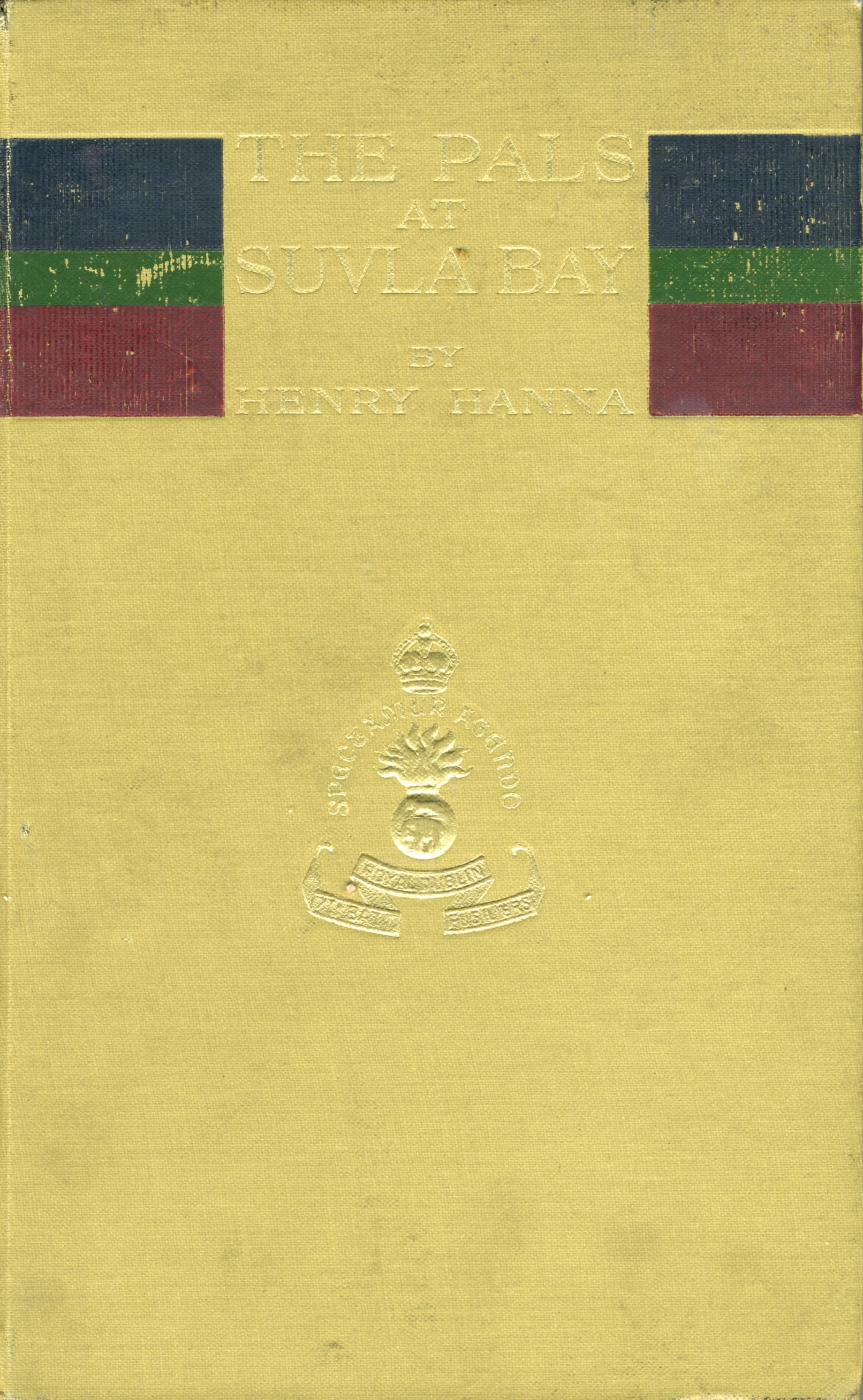The record of ‘D’ Company, 7th Royal Dublin Fusiliers, at Gallipoli.
This is an unusual book in that it is the record of a company, a company of the 7th Royal Dublin Fusiliers(RDF) – ‘D’ Company – at Gallipoli. The battalion was raised in August 1914 and allocated to 30th Brigade, 10th Irish Division. At the request of a Mr Browning, President of the Irish Rugby Football Union, the CO of the new battalion agreed to keep open a special company, ‘D’ Company as it was subsequently known, for “Pals” from the Irish Rugby Union volunteers. It was a remarkable mix of volunteers – barristers, doctors, solicitors, stockbrokers, bankers, civil servants and the like, nearly all well known in Dublin’s public and social life. Training in Ireland went on until, on the last day of April 1915, 7th RDF sailed for Holyhead and from there travelled to Basingstoke, the concentration area of the 10th Division. The final period training at divisional level lasted to the end of June and a week later they were off to the Dardanelles.
They landed at Suvla Bay on the morning of 7th August and there follows a comprehensive account of the fighting over the next few weeks, especially as it affected “D” Company. The first major battle was the attack on Chocolate Hill and then there was protracted fighting on Kizlar Dagh Ridge. Much of the description of the action is taken from letters and from personal memories of those who were there. The story ends soon after midnight 29th/30th September 1915 when the battalion was taken off the peninsula and brought to Lemnos. There is a final chapter on the work of the chaplains with the wounded.
In an appendix there is a list of men of the battalion mentioned in despatches and the complete roll of the company showing five officers and 281 men and a further 23 transferred to “B” Company
for the machine gun section. There is also a list of the 79 NCOs and men who survived to leave Suvla on 29th September. Finally there is a remarkable photographic section at the end depicting some 250 officers and men with brief biographical details and similar details for another 58 for whom there are no photos. This is certainly a very rare book.
Authors:
Henry Hanna; foreword Lieut. Gen. Sir Bryan T. Mahon





